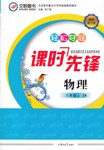
【題目】“五十六個(gè)民族,五十六枝花,五十六個(gè)兄弟姐妹是一家……”這首歌曲唱出了各族人民的心聲。
【1】請(qǐng)你判斷,我國(guó)人口最多的少數(shù)民族是
A.壯族
B.畬族
C.滿族
D.蒙古族
【2】中國(guó)人口占世界總?cè)丝诘?/span>
A.二分之一
B.三分之一
C.四分之一
D.五分之一
【3】我國(guó)面積最大、人口最多的直轄市是
A.北京市
B.上海市
C.重慶市
D.天津市
 文敬圖書(shū)課時(shí)先鋒系列答案
文敬圖書(shū)課時(shí)先鋒系列答案
| 年級(jí) | 高中課程 | 年級(jí) | 初中課程 |
| 高一 | 高一免費(fèi)課程推薦! | 初一 | 初一免費(fèi)課程推薦! |
| 高二 | 高二免費(fèi)課程推薦! | 初二 | 初二免費(fèi)課程推薦! |
| 高三 | 高三免費(fèi)課程推薦! | 初三 | 初三免費(fèi)課程推薦! |
科目:初中地理 來(lái)源: 題型:
【題目】教育部要求在全國(guó)教材中一律將8年抗戰(zhàn)改為 抗戰(zhàn),以強(qiáng)調(diào)“九一八事變”后的抗戰(zhàn)歷史是前后貫通的整體,全面反映日本侵華罪行,加強(qiáng)愛(ài)國(guó)主義教育。( )
A.10年
B.12年
C.14年
D.16年
查看答案和解析>>
科目:初中地理 來(lái)源: 題型:
【題目】用括號(hào)中所給動(dòng)詞的正確形式填空,使短文完整。
Ben came along. He 【1】 (eat) an apple, and making sounds like a riverboat. Tom went on 【2】(paint) the wall, paying no attention to Ben. At last, Tom spoke, "Why, it's you, Ben! I didn't notice."
Ben replied, "I'm going swimming. But of course you have to.work, don't you?"
"Well, maybe it is, and maybe it isn't. ' Tom said, "Do I get a chance 【3】 (brush) a wall white every day?"
Ben became interested. He said, "Tom, let me paint a little."
"No-nod don't think you should, Ben. You see, Aunt Polly is very worried about this wall. This wall must 【4】(do) very carefully. Why, I guess there isn't one boy in a thousand, maybe two thousand4 that can do it well."
Ben begged: "Is that so? Oh, let me just try! Only just a bit. I'll be just as careful as you. Please let me try. I【5】(give) you my apple."
Tom finally gave up the brush. He had an unhappy face--but a happy heart. And as Ben worked in the hot sun, Tom 【6】 (rest) under a tree.
查看答案和解析>>
科目:初中地理 來(lái)源: 題型:
【題目】用括號(hào)中所給動(dòng)詞的正確形式填空,使短文完整。
Chen Qingyue, an eighth grader at Jane Lathrop Stanford Middle School, California, is a "star" on WeChat now. He 【1】 (start) using WeChat last August. "My Chinese classmate's mother advised me 【2】 (write) articles about my US experience. Then I got the idea," he said.
At the beginning, few of his stories 【3】 (read). But he didn't give up. "Gradually, I realized that followers prefer things that are"useful’ to them." His most popular article was how to deal with interviews when hoping for a US private high school.
Many readers encourage and thank him by 【4】 (send) messages and money. So far he 【5】(receive) about 1,500 yuan. "I 【6】 (keep) writing at least until high school," he said.
查看答案和解析>>
科目:初中地理 來(lái)源: 題型:
【題目】根據(jù)句子意思,用括號(hào)中所給單詞的正確形式填空。(每空限填一個(gè)單詞)
【1】After all, when I choose one direction in life, I may lose the _________ (possible) of another.
【2】It is easier for two parties to reach _______________ (agree) than for three.
【3】I'm not very _________________ (satisfy) with the way he cut my hair.
【4】Computer technology is _______________ (rapid) changing the world today.
【5】I became_______________ (comfortable) that the people at the next table were watching me.
查看答案和解析>>
科目:初中地理 來(lái)源: 題型:
【題目】下表為我國(guó)各類地形面積占全國(guó)面積的百分比,回答10~12題。
類型 | 山地 | 高原 | 盆地 | 平原 | 丘陵 |
百分比(%) | 33 | 26 | 19 | 12 | 10 |
【1】構(gòu)成我國(guó)地形的骨架是
A.高原
B.山脈
C.盆地
D.丘陵
【2】下列關(guān)于我國(guó)地形的說(shuō)法,不正確的是
A.類型復(fù)雜多樣
B.山地面積最大
C.各類地形交錯(cuò)分布
D.平原、丘陵多集中分布在熱帶地區(qū)
【3】下列關(guān)于如何實(shí)現(xiàn)山區(qū)社會(huì)、經(jīng)濟(jì)和生態(tài)可持續(xù)發(fā)展的敘述,錯(cuò)誤的是
A.山區(qū)風(fēng)景秀麗,開(kāi)發(fā)生態(tài)旅游
B.砍伐與撫育更新相結(jié)合,大力發(fā)展林業(yè)
C.大量砍伐林木,以滿足市場(chǎng)需要
D.山區(qū)急流水能豐富,積極建設(shè)水電站
查看答案和解析>>
科目:初中地理 來(lái)源: 題型:
【題目】某中學(xué)地理老師給同學(xué)們布置了一個(gè)綜合實(shí)踐活動(dòng),請(qǐng)同學(xué)們?cè)谝粡?0cm×30cm的繪圖紙上,繪制一幅校園平面圖。為了完成這一任務(wù),玲玲準(zhǔn)備了以下材料:繪圖紙、鉛筆、橡皮擦、直尺、卷尺、指南針、計(jì)算器、溫度計(jì)。
玲玲還寫(xiě)了繪制校園平面圖的工作步驟:①標(biāo)注文字和注記;②根據(jù)比例尺和圖例繪圖;③設(shè)置所表示事物的圖例,如樓房、運(yùn)動(dòng)場(chǎng)、校門、校道、綠地、水池等;④根據(jù)校園的實(shí)際,確定平面圖的方向;⑤用卷尺測(cè)量校園周邊距離,選擇合適的比例尺。
結(jié)合上述活動(dòng)過(guò)程,解決下列問(wèn)題:
(1)玲玲準(zhǔn)備的材料中有一樣不需要,是。
(2)玲玲寫(xiě)的工作步驟順序亂了,正確的應(yīng)該是。
查看答案和解析>>
科目:初中地理 來(lái)源: 題型:
【題目】下列行為對(duì)空氣質(zhì)量沒(méi)有影響的是( )
A.秋收后,村民把秸稈燒掉,用秸稈灰肥田
B.城里的汽車越來(lái)越多,尤其是私人汽車
C.許多家庭用煤爐生火做飯
D.電動(dòng)摩托車的使用
查看答案和解析>>
科目:初中地理 來(lái)源: 題型:
【題目】The word "day" has two meanings. When we talk about the number of days in a year, we are using "day' to mean 24 hours. But when we talk about day and night, we are using "day" to mean the time between sunrise and sunset. Since the earth looks like a ball, the sun can shine on only half of it at a time. Always one half of the earth is having day and the other half night. A place is moved from day into night and from night into day over and over by the spinning (旋轉(zhuǎn)) of the earth. At the equator (赤道) day and night are sometimes of the same length. They are each twelve hours long. The sun rises at 6 in the morning and sets at 6 in the evening. For six months the North Pole is tilted (傾斜) toward the sun. In those months the Northern Hemisphere (半球) gets more hours of sunlight than the Southern Hemisphere. Days are longer than nights. South of the equator nights are longer than days. For the other six months the North Pole is tilted away from the sun. Then the Southern Hemisphere gets more sunlight. Days are longer than nights. North of the equator nights are longer than days. Winter is the season of long nights. Summer is the season of long days.
【1】When the Western Hemisphere is having day, the Eastern Hemisphere is having_________
A. both day and night B. day C. either day or night D. night
【2】A place is moved from day into night and from night into day over and over by the
of the earth.
A. pushing B. pulling C. spinning D. passing
【3】At the equator day is as long as night.
A. sometimes B. never C. usually D. always
【4】When the North Pole is tilted toward the sun, the Northern Hemisphere gets
sunlight.
A. less B. more C. all D. no
【5】When it is winter in China,______________ .
A. the USA is tilted toward the sun
B. the South Pole is tilted away from the sun
C. the North Pole is tilted toward the sun
D. the North Pole is tilted away from the sun
查看答案和解析>>
百度致信 - 練習(xí)冊(cè)列表 - 試題列表
湖北省互聯(lián)網(wǎng)違法和不良信息舉報(bào)平臺(tái) | 網(wǎng)上有害信息舉報(bào)專區(qū) | 電信詐騙舉報(bào)專區(qū) | 涉歷史虛無(wú)主義有害信息舉報(bào)專區(qū) | 涉企侵權(quán)舉報(bào)專區(qū)
違法和不良信息舉報(bào)電話:027-86699610 舉報(bào)郵箱:58377363@163.com